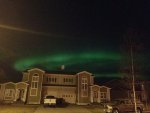There are graphs in multiple locations on the net displaying the cyclic nature of the sun. Sun spots have been used as an analog to solar activity for a long time now, but how many people ask why that is? They also don't ask how it is we know about the effects of the maunder/sporer/dalton minimums and the previous cycles up until the 1950s era.
We know these things through an inverse analog. That analog being cosmic spallation of gases in our atmosphere. Cosmic spallation is the creation of radio isotopes in the atmosphere as gamma/x-ray, neutron particles etc impact those elements. One of the more important of those analogs is beryllium 10. It has a half life of ~1.39 million years and is created by cosmic radiation impacting oxygen and nitrogen atoms at varying intensities. If you wish to look up how this happens, look up the terms photoelectric effect, Compton scattering, and pair production.
Those isotopes end up falling to earth embedding themselves in ice, trees, etc. This effectively creates a record of stronger and weaker periods of solar and interstellar sourced energies that impact the earth's atmosphere.
That gets to the next point. The interstellar wind is not something you hear about normally if ever.
https://www.nasa.gov/content/goddard/interstellar-wind-changed-direction-over-40-years
It is something that few have twigged to regarding its impact on the earth. The 'consensus' was it never makes it to inside the earth's orbit. That has been proven false. It was also thought that much like our magnetosphere, the solar systems heliosphere prevented the worst of the interstellar wind from entering the system. That also was proven false. The IBEX project discovered there is no bowshock to the heliosphere and likely hasn't been for some time now.
That gets us to the magnetosphere. Our magnetosphere does in fact have a bowshock. If the earth had no bowshock/magnetosphere we'd never been born to worry about it. That said, it's also weakening. One would think it was correlated with the sunspot cycle, but it's not. Cycle 23 peaked at ~260 spots, but the weakening magnetosphere has been in progress since ~1980 and it's speeding up.
https://www.livescience.com/46694-magnetic-field-weakens.html
In fact, it has been in progress for well over a century.
https://mobile.nytimes.com/2003/12/...ut-no-dire-effects-are-foreseen.html?referer=
Starting in 1980 or so that weakening speed up. In the last 25 years it's come close to weakening as much as it had in the previous 140 years or so.
This is important as there are several sites springing up that focus almost exclusively on sun spots in their predictions of the so called 'grand solar minimum' and a new mini ice age.
Now for another piece of the puzzle. Our atmosphere does in fact expand and contract in time with solar cycles. However that has nothing to do with sunspots directly. Remember sunspots are an analog not the cause directly for solar cycles. The atmosphere does what it does due simply to the first and second laws of thermodynamics. Heat it up it expands, cool it down it contracts. You can experience that yourself with a simple volume test of a gas or liquid at varying temperatures. It is the core principle behind how a mercury thermometer works. This from thermal input primarily, and has little to no correlation to the ionizating radiation and the isotopes it creates.
Now yet another piece of the puzzle.
The interplanetary magnetic field.
https://science.nasa.gov/science-news/science-at-nasa/2008/16dec_giantbreach
The crowd that supports the electric universe hypothesis seizes on the fact that the IMF delivers current to the earth's poles. It makes me wish Faraday was still around to explain the concept of induction.
Moving along, the IMF is responsible for delivering most of the ionizing particulates and plasma from the sun to the earth and other planets. Unlike the thermal and ionizing output, there is no evidence the IMF has weakened along with solar cycles or that it ever has. If the sun were a battery delivering current from the ether as they propose, it would not be selective choosing to power one thing and not another.
All that said, we are set up for a perfect storm, but not for the reasons so often quoted by the pseudo science crowd. That storm requires the continuation of current trends which by no means is assured.
The 'potential' is a rapid change in the earth's weather, magnetosphere, and magnetic poles. The likely change will be towards cooler weather in some places, yet hotter in others. We already see much of that, but we will also likely be seeing changes in the quality and quantity of light impacting the earth as its albedo is altered by these conditions. No time in written history covers this potential given all the varying elements at play. Anyone stating they know definitively what's coming is not basing the statement in fact. The only thing I'm relatively sure of is the probability of us liking what's coming is near zero and that it's coming soon.
Going back to my room at holiday Inn express. Make what you will of this.



